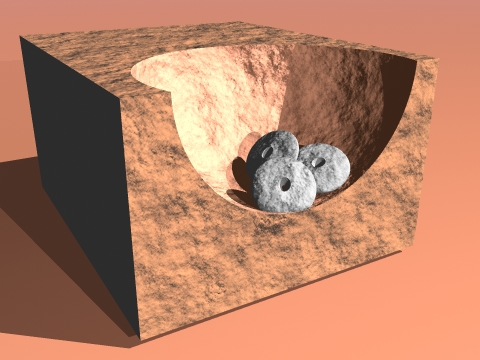The Virtual Meier Site
Caches

Caches are fascinating features, because (if properly identified) they represent a very brief but meaningful moment in time, in which the mind of a person in the past is rather more 'accessible' than usual in archaeology: here we may observe what was considered to be associated with what; how many of such an item are deemed worthy of caching, suggesting their value, and so on. Theoretically, caches may also be used in the inference of abandonment behaviour, because people will cache different types of items depending on the circumstances of their leaving their residences. At Meier, unfortunately, we cannot be sure which caches are the latest (most recent), and which are the oldest, because it seems a constant or near-constant lower elevation was maintained in the pits throughout the 400-year occupation, and because